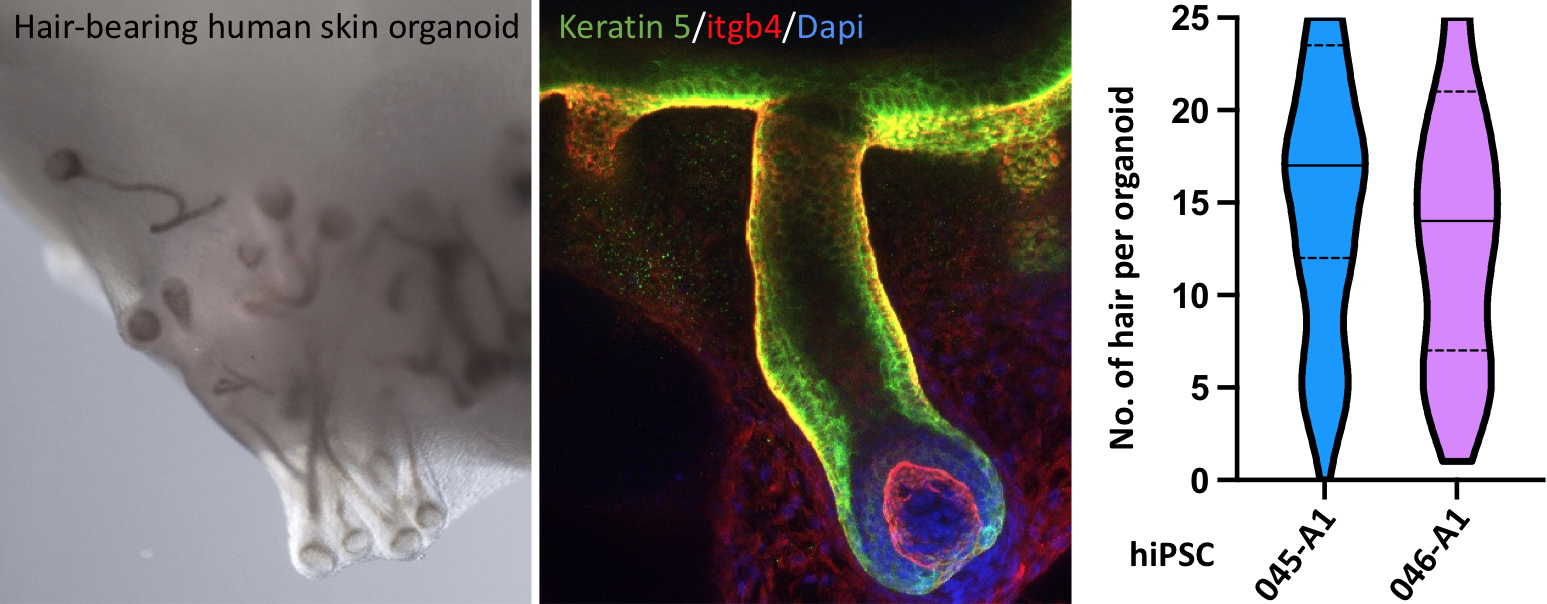Skin integrity depends on the epidermal-dermal junction (EDJ), the interface between basal keratinocytes of the epidermis and stroma of the dermis. Basal keratinocytes adhere to the underlying basement membrane (BM), an extracellular matrix (ECM) sheet, composed primarily of laminin-332 and type IV collagen (ColIV) networks. This adhesion is mediated by integrins that cluster to adhesion structures on the basal plasma membrane of keratinocytes. The adhesive integrity of the EDJ largely depends on α6β4-containing adhesion structures called type I hemidesmosomes (HDs) and on integrin β1-based adhesion complexes. Additionally, BM is connected to the dermal connective tissue
via anchoring fibrils, consisting of ColVII.
In this study, the researchers reported efficient generation of hair-bearing skin organoids from two independent hiPSC lines following the multistep protocol recently developed by Koelher’s lab.
In vitro skin organogenesis resulted in mid-gestational skin, a fetal stage during which the main components of the EDJ develop. Consistently, immunofluorescence and electron microscopy analyses showed that skin organoids form a fully stratified interfollicular epidermis
in vitro. Basal keratinocytes in organoids adhere to laminin-332 and ColIV-rich BM
via type I HDs and integrin β1-based adhesion complexes. The EDJ in organoids was surprisingly almost devoid of ColVII, indicating that further maturation is required to take full advantage of skin organoids as disease model for some forms of EBs, in particular those caused by mutations in the
COL7A1 gene.

Visualization of emerging hair follicles in mature human skin organoids.
Bright field image (left panel) and confocal image after immunostaining for keratin 5 and integrin beta4 (middle panel). Violin plots showing the average number of hair follicles formed per organoid from LUMCi045-A1 and from LUMCi046-A1 hiPSC lines (right panel).